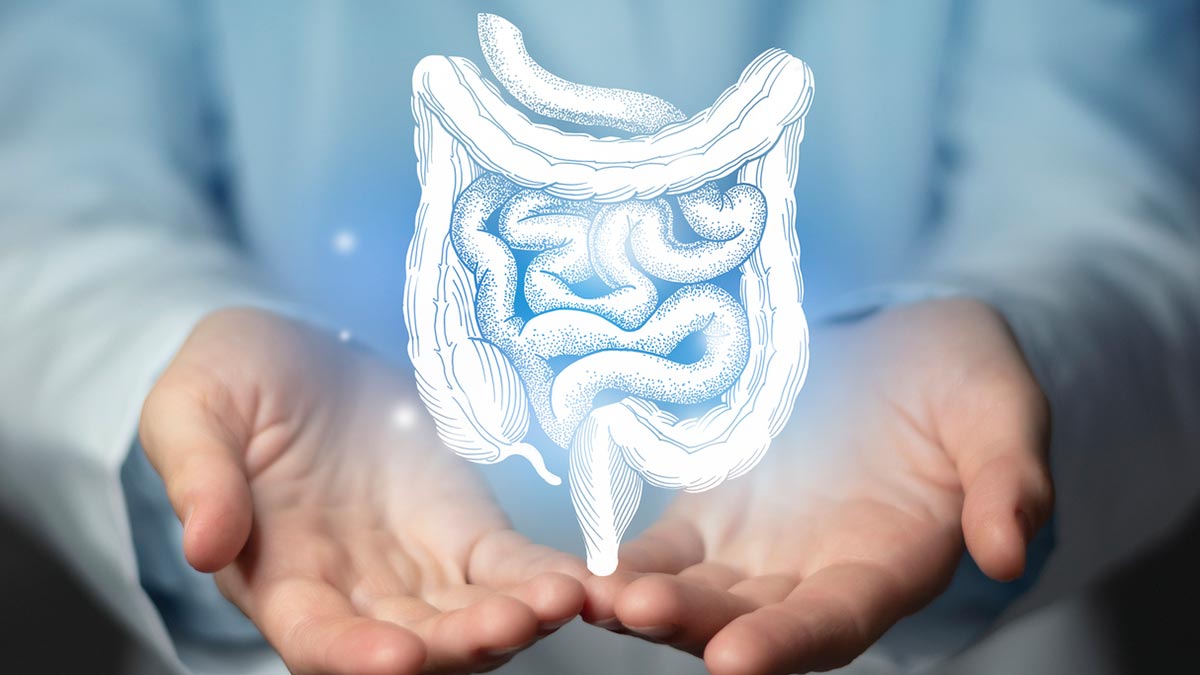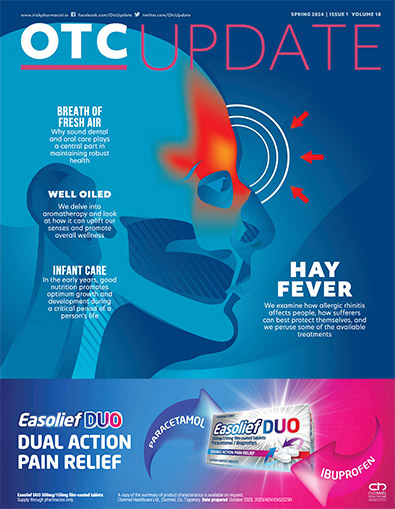Prof Brendan Kelly, Professor of Psychiatry, Trinity College Dublin, looks at whether Mindfulness is a hard science of just another ‘wellness woo’
Mindfulness is everywhere. For the past decade, it has been impossible to avoid discussions about mindfulness in the media, in books, online, at work, and even in casual conversations. This is mostly good, but it sometimes seems as if mindfulness is presented as the solution to everything. It is not. Mindfulness is a very useful tool, but it is not the answer to all of life’s problems.
In its essence, mindfulness means paying attention to the present moment, simply and directly.1 It means maintaining a careful awareness of thoughts, actions and emotions, but not judging them. It involves staying focused on the ‘now’ as much as possible and, when the mind wanders, gently re-directing it back to the present moment: the feeling of the chair, background sounds floating past, or feelings in the body.
Mindfulness means being present. While the practice is commonly associated with relaxation, mindfulness is equally associated with alertness or, more precisely, awareness, making its attainment a balancing act.
Given the ubiquity of mindfulness today, it is tempting to see it as just another over-hyped element of ‘wellness woo’, lacking substance or meaning. This is especially true when mindfulness is presented mindlessly, or touted as the solution to everything from backache to unhappiness, poor eating habits to problems with parenting.
It is important to question mindfulness in a balanced way. It is vital that we examine its purported benefits in order to be certain that we are using our time well and not deluding ourselves with seductive world views that deliver little benefit. Evidence about mindfulness is essential, both in our own lives and across the scientific literature.
Happily, an increasing body of research supports the usefulness of mindfulness, once it is practiced properly and with commitment. There is growing evidence from randomised controlled trials that mindfulness interventions (especially eight-week mindfulness programmes) can help with the management of chronic pain, reduce rates of depressive relapse in at-risk individuals, and improve outcomes in substance abuse.2-4
This paper examines certain developments in the mindfulness literature in 2021, looks at some of the neuroscience associated with mindfulness, and presents some conclusions for the future of this field.
Some developments in mindfulness in 2021
At present, the best clinical evidence in the field of mindfulness relates to eight-week mindfulness programmes to reduce relapse of depression in at-risk individuals.2,3 In 2021, a review in the American Journal of Psychotherapy comprehensively synthesised the evidence for mindfulness-based cognitive therapy (MBCT), acceptance and commitment therapy (ACT), and positive psychotherapy (PPT) for treating an episode of major depression.5 These authors performed a random-effects meta-analysis of 15 relevant studies and found that all three therapies demonstrated efficacy in reducing symptoms of depression with a small favourable effect, when compared with controls.
This finding is broadly consistent with current understandings of the usefulness of MBCT, but these authors also noted that the overall quality of evidence is low. Despite this important caveat, however, evidence to date supports the idea that MBCT and ACT may be superior to inactive or treatment-as-usual controls. In addition, PPT might be comparable to active controls for reducing symptoms of major depression after an acute course of therapy. Hopefully, continued study will clarify these benefits further.
One of the likely directions for future research is the identification of specific aspects of depression that mindfulness-based interventions (MBIs) might target. With this in mind, there was an interesting systematic review of MBIs as psychotherapy interventions for suicidality in the International Journal of Social Psychiatry in 2021.6 This review identified 13 relevant studies, comprising six randomised controlled trials, two controlled studies, and five pre-post observational studies. Findings were mostly favourable and suggested that MBIs hold promise as interventions for suicidal behaviour. Again, large scale, high-quality trials are required to clarify this, and will hopefully follow soon.
The development of the scientific literature on mindfulness was the subject of a third, especially fascinating review paper in 2021, in the journal Mindfulness.7 This novel article presented a bibliometric analysis of publications about mindfulness indexed in Web of Science in order to identify trends and developments in mindfulness research over 55 years. The authors identified 16,581 relevant publications between 1966 and 2021, with an exponential growth in numbers since 2006.
Almost half (47 per cent) of the publications were in psychology and 21 per cent were in psychiatry. The more recent literature, between 2016 and 2021, showed a growing interest in moderators and mechanisms, long-term meditation, neuroscience, and smartphone or online delivery of interventions. It is, perhaps, neuroscience that has commanded most attention in recent years and merits further discussion here.
The effect of mindfulness on the brain
Over the past decade, there has been an explosion of neuroscientific research that seeks to correlate mindfulness practices with physical changes in the nervous system, especially the brain.8 While this literature is still incomplete, it is now apparent that meditation practice and mindfulness affect the brain in various ways, although the extent of this is not fully clear and many studies are still small.
One magnetic resonance imaging (MRI) study examined cortical thickness in 20 experienced mindfulness meditators and 15 controls with no experience of meditation or yoga. This study found that brain regions linked with attention, interoception (perceiving sensations from inside the body), and sensory processing were thicker in meditators compared to controls.9 These findings support the idea that cortical plasticity is associated with meditation, and that sustained mindfulness practice affects the brain physically.
Another study looked at structural MRI scans and other assessments in 17 meditators and 18 controls, and found that meditators had significantly lower pain sensitivity compared to controls.10 Lower pain sensitivity was linked with thicker cortex in affective, pain-related brain regions. There was also evidence that some changes were more prominent in participants with more years’ experience of meditation, suggesting a dose-response effect. Various other studies provide similar evidence of changes in the brains of meditators, supporting the idea that sustained mindfulness meditation affects the biological brain.11
While studies such as these provide interesting, provocative insights into the possible effects of mindfulness and meditation on the brain, it is important to examine this literature both broadly and critically, to see if findings are consistent. The allure of brain imaging and similar research tools can lead us to mistake technology for understanding, or data for insight.12 Critical thought is vital if the pitfalls of neuroscience are to be avoided and the potential of this field is to be realised. Meta-analyses, systematic reviews and careful reflection are essential, especially when small neuroscientific studies command media attention that they might not always merit. All that glisters is not gold.
Meta-analyses and systematic reviews of the neuroscience of mindfulness
There have been a number systematic reviews of the neuroscience of mindfulness over the past decade. Their findings are interesting and optimistic, but they also demonstrate a clear need for a broader, more coordinated literature on this topic.
One systematic review and meta-analysis of 21 neuroimaging studies in approximately 300 meditators found that eight brain regions were consistently altered in meditators, including areas related to meta-awareness (deliberate attention towards conscious thought), body awareness, memory, self and emotion regulation, and communication within the brain.13 While the ‘effect size’ was medium, the authors voiced significant concerns about selection bias, overlapping samples, and publication bias, owing to the lack of almost any negative results in the published literature. They conclude that further, more rigorous research is needed.
Other authors make similar points, noting positive findings, but also highlighting serious methodological problems, including small sample sizes (limiting power), variations in study design (limiting comparability), and a need for more replication of studies (confirming, refining, or refuting existing findings).8 They conclude that future research should address these methodological difficulties and try to link the effects of mindfulness on neural structure and function with behavioural performance, such as cognitive, affective, and social function.
Fields of neuroscientific research other than neuroimaging confirm that the neuroscience of mindfulness is an area worth pursuing. One systematic review and meta-analysis examined controlled trials of the effect of mindfulness-based interventions on brain-derived neurotrophic factor (BDNF), a biological marker of neuroplasticity.14 Despite small sample sizes, they found that mindfulness-based interventions can increase peripheral BDNF, which supports the idea that mindfulness can change nervous system structure. Electroencephalography studies of electrical activity across the meditating brain generally confirm this as an area of interest, albeit that methodological heterogeneity is a recurring concern.15
The future of mindfulness in medicine
Neuroscientific studies indicate that sustained mindfulness meditation can affect the physical brain. To date, however, studies have not characterised these effects definitively, as a result of small sample sizes, overlapping samples, selection bias, diversities of methodologies, publication bias, and failures to replicate previous studies. Hopefully, these issues will be addressed in the years to come.
During 2021, the literature on the clinical value of mindfulness expanded significantly, confirming its value and suggesting directions for future work. It is useful to bear in mind that, notwithstanding the limitations of the scientific literature, neuroscience can neither ‘prove’ nor ‘disprove’ the value of the individual experience of mindfulness. The subjective benefits of mindfulness remain experiential, regardless of what the science finds or fails to find.
Finally, it is important that excessive claims made about mindfulness and meditation do not draw attention away from the value of these ancient practices. As is the case with many things, mindfulness and meditation do not have all the answers, but they are useful tools when they are used with humility, awareness, and care.
Prof Kelly is the author of a number of books including The Doctor Who Sat For A Year (Gill Books).
References
1. Kelly BD. The Doctor Who Sat For A Year. Dublin: Gill Books, 2019
2. Creswell JD. Mindfulness interventions. Annual Review of Psychology 2017; 68: 491-516.
3. Segal Z, Williams M, Teasdale J. Mindfulness-Based Cognitive Therapy for Depression (Second Edition). New York and London: The Guilford Press, 2013.
4. Kelly BD. The Science of Happiness: The Six Principles of a Happy Life and the Seven Strategies for Achieving It. Dublin: Gill Books, 2021.
5. Seshadri A, Orth SS, Adaji A, Singh B, Clark MM, Frye MA, McGillivray J, Fuller-Tyszkiewicz M. Mindfulness-based cognitive therapy, acceptance and commitment therapy, and positive psychotherapy for major depression. American Journal of Psychotherapy 2021; 74: 4-12.
6. Raj S, Ghosh D, Verma SK, Singh T. The mindfulness trajectories of addressing suicidal behaviour: A systematic review. International Journal of Social Psychiatry 2021; 67: 507-19.
7. Baminiwatta A, Solangaarachchi I. Trends and developments in mindfulness research over 55 years: A bibliometric analysis of publications indexed in Web of Science. Mindfulness 2021; 12: 2099-116.
8. Tang Y-Y, Hölzel BK, Posner MI. The neuroscience of mindfulness meditation. Nature Reviews. Neuroscience 2015; 16: 213-25.
9. Lazar SW, Kerr CE, Wasserman RH, Gray JR, Greve DN, Treadway MT, McGarvey M, Quinn BT, Dusek JA, Benson H, Rauch SL, Moore CI, Fischl B. Meditation experience is associated with increased cortical thickness. NeuroReport 2005; 16: 1893-7.
10. Grant JA, Courtemanche J, Duerden EG, Duncan GH, Rainville P. Cortical thickness and pain sensitivity in Zen meditators. Emotion 2010; 10: 43-53.
11. Kang D-H, Jo HJ, Jung WH, Kim SH, Jung Y-H, Choi C-H, Lee US, An SC, Jang JH, Kwon JS. The effect of meditation on brain structure: Cortical thickness mapping and diffusion tensor imaging. Social Cognitive and Affective Neuroscience 2013; 8: 27-33.
12. Satel S, Lilienfeld SO. Brainwashed: The Seductive Appeal of Mindless Neuroscience. New York: Basic Books, 2013.
13. Fox KCR, Nijeboer S, Dixon ML, Floman JL, Ellamil M, Rumak SP, Sedlmeier P, Christoff K. Is meditation associated with altered brain structure? A systematic review and meta-analysis of morphometric neuroimaging in meditation practitioners. Neuroscience and Biobehavioral Reviews 2014; 43: 48-73.
14. Gomutbutra P, Yingchankul N, Chattipakorn N, Chattipakorn S, Srisurapanont M. The effect of mindfulness-based intervention on brain-derived neurotrophic factor (BDNF): A systematic review and meta-analysis of controlled trials. Frontiers in Psychology 2020; 11: 2209.
15. Schoenberg PLA, Vago DR. Mapping meditative states and stages with electrophysiology: Concepts, classifications, and methods. Current Opinion in Psychology 2019; 28: 211-7.







